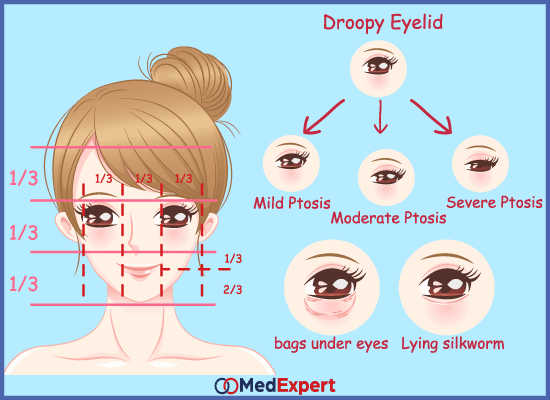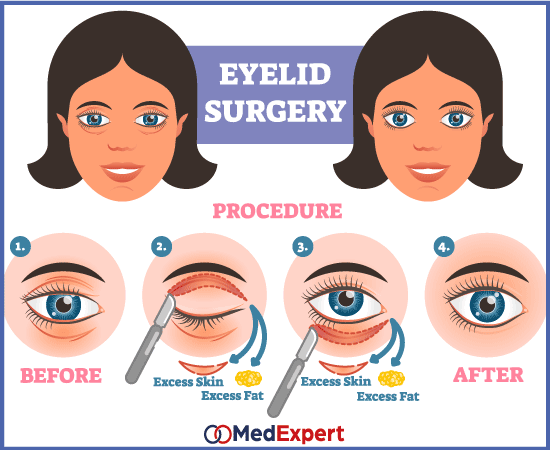DROOPY EYELIDS
Certain times, our faces do not reflect how young we feel; with early signs of aging such as weary, heavy looking upper eyelids and puffy eye bags can often causing us to look tired and old.
As we age, your eyelids stretch, and the muscles supporting them start to weaken. This excess fat to gather above and below your eyelids, causing droopy upper lids, sagging eyebrows and bags under our eyes.
Besides making you look older, severely sagging skin around our eyes can reduce the upper and outer parts of your peripheral vision (side vision).

Due to the natural aging process, anyone can develop droopy eyelids, however it is most common in older adults. A tendon attaches the levator muscle, which is responsible for lifting the eyelid and as you age, that muscle stretches, resulting in the eyelid falling.
WHAT ARE THE SIGNS & SYMPTOMS OF DROOPY EYELIDS?
- Lax skin above the eyes
- Drooping of the upper eyelid
- Eyelids appear hollow
HOW CAN DROOPY EYELIDS BE FIXED?
Blepharoplasty
This surgery includes surgery such as the removal of excess skin, muscle and fat, in order to repair droopy eyelids. Before having surgery, the surgeon will mark the affected areas. During the operation a small incision is made in the crease of the upper and lower eyelids. The excess skin and fat is then removed, the cheek tissue lifted, in order to take care of any loss of fat below the eyes. Blepharoplasty is performed under local anesthesia with sedation.

After the surgery
Some swelling and bruising, accompanied by pain is to be expected post surgery and you will be prescribed the necessary painkillers to ease your discomfort. The swelling may last several weeks before it begins to ease.
Having upper and lower eyelid surgery is a great way to revamp your look. Within a few weeks your eyes will be fuller, brighter and more refreshed.
HOW ARE DROOPY EYELIDS DIAGNOSED?
- History taking and physical examination:Your doctor will talk to you about your overall health, complains and previous medical history. He or she will carefully examine your skin, discuss with you the weak points and ask you about your desires and expectations, afterwards he or she will explain possible treatment options available for you.


